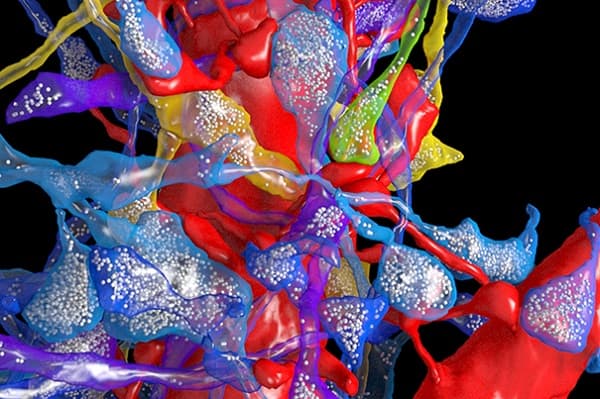Harvard Researchers To Study Brain Competence - Computer Vision Systems, Robotics And AI To Benefit
In Cambridge, Massachusetts, Harvard University’s John A. Paulson School of Engineering and Applied Sciences (SEAS), Center for Brain Science (CBS) and Department of Molecular and Cellular Biology will collaborate to move deeper in neuroscience and develop computer algorithms that could match the capabilities of human brain.
The project has received a $28 million aid from the US federal government under the Intelligence Advanced Research Projects Activity, or IARPA, an initiative that looks to back large-scale commercial research programs with funds.

Intelligence agencies throughout the world today are flooded with information – but this is not because of the size of the data. The real problem lies in the inability of computer systems in handling such abundance of data. Even after the plethora of cutting edge technological advances, machines are far from us when it comes to handling data. IARPA will therefore focus on figuring out the structural and biological aspects that make the human brain as good as it is, and subsequently, computers will be designed accordingly with equivalence to humans in interpreting, analysing, and storing information.
David Cox, assistant professor of molecular and cellular biology and computer science at Harvard compares the project with the Human Genome Project, an international, collaborative program initiated in 1975 whose goal was the complete mapping and understanding of all genes of human beings. The first half of this project is exactly that, except that it concerns exclusively with the brain.
It will all begin with training rats to visually recognise objects on the computer screen. In this process, laser microscopes will observe and record the activity of visual neurons, and the dynamics of the brain will be determined. Then, a portion of the rat’s brain will be sent to the laboratory where it will be sliced ultra-thin and imaged under the world’s first multi-beam scanning electron microscope.
This will give scientists a detailed structure of a visual cortex, if not of a human brain, at least of an animal. The obtained information will be reconstructed so that it can be visualised in three dimensions.
The second phase of the project is equally important. It will involve building algorithms for learning and pattern recognition with reference to and of the calibre of the obtained “connectomics dataâ€. The researchers hope that these algorithms would improve performance of computer vision systems with diverse applications – in robots and AI systems among others.
Source: $28M challenge to figure out why brains are so good at learning – Harvard Gazette
The project has received a $28 million aid from the US federal government under the Intelligence Advanced Research Projects Activity, or IARPA, an initiative that looks to back large-scale commercial research programs with funds.

Intelligence agencies throughout the world today are flooded with information – but this is not because of the size of the data. The real problem lies in the inability of computer systems in handling such abundance of data. Even after the plethora of cutting edge technological advances, machines are far from us when it comes to handling data. IARPA will therefore focus on figuring out the structural and biological aspects that make the human brain as good as it is, and subsequently, computers will be designed accordingly with equivalence to humans in interpreting, analysing, and storing information.
David Cox, assistant professor of molecular and cellular biology and computer science at Harvard compares the project with the Human Genome Project, an international, collaborative program initiated in 1975 whose goal was the complete mapping and understanding of all genes of human beings. The first half of this project is exactly that, except that it concerns exclusively with the brain.
It will all begin with training rats to visually recognise objects on the computer screen. In this process, laser microscopes will observe and record the activity of visual neurons, and the dynamics of the brain will be determined. Then, a portion of the rat’s brain will be sent to the laboratory where it will be sliced ultra-thin and imaged under the world’s first multi-beam scanning electron microscope.
This will give scientists a detailed structure of a visual cortex, if not of a human brain, at least of an animal. The obtained information will be reconstructed so that it can be visualised in three dimensions.
The second phase of the project is equally important. It will involve building algorithms for learning and pattern recognition with reference to and of the calibre of the obtained “connectomics dataâ€. The researchers hope that these algorithms would improve performance of computer vision systems with diverse applications – in robots and AI systems among others.
Source: $28M challenge to figure out why brains are so good at learning – Harvard Gazette
Replies
You are reading an archived discussion.
Related Posts
Project Abstract / Summary : WIRELESS GESTURE CONTROLLED ROBOT
Today human-machine interaction is moving away from mouse and pen and is becoming pervasive and much more compatible with the physical...
Project Abstract / Summary : Existing model:-
We designed and implemented a behavior analyzing system that uses twitter data to analyze behavior in real time. Twitter data is continuously downloaded...
Project Abstract / Summary : Dump yards are the most unhealthy and the worst parts of the cities. Generally these are located at the outskirts of the cities where large...
Panasonic has recently launched its brand new smartphone, the Eluga Turbo exclusively on e-commerce site Snapdeal. The company’s latest 4G enabled device is the newest addition to the Eluga family....
Chris Tuan, professor of civil engineering at the University of Nebraska-Lincoln and his team of researchers have developed a special kind of concrete, one that can conduct electricity to melt...
